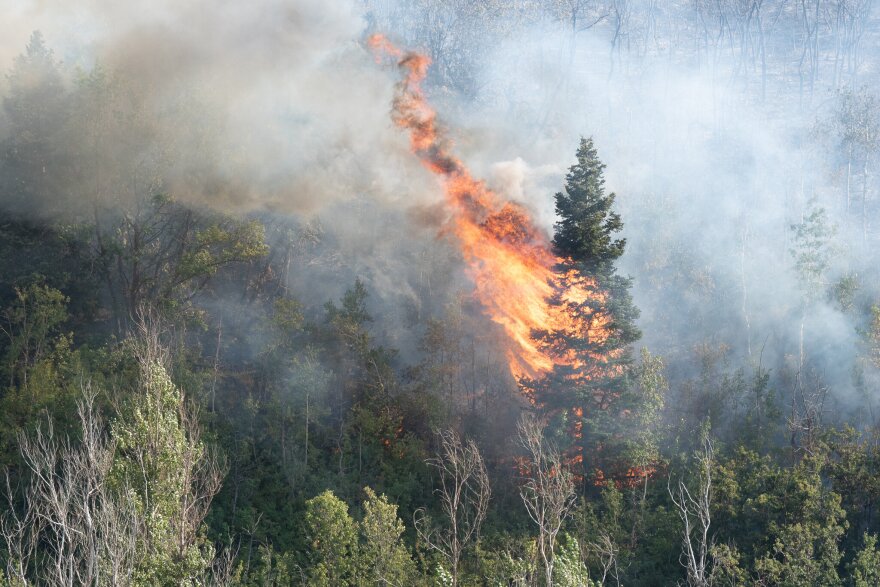By modern western wildfire standards, the Parleys Canyon Fire was small -- only 541 acres compared to the over 700,000 currently burning in California’s Dixie Fire.
With the proliferation of wildfires in recent years, what can be done in the Wasatch Back and elsewhere to help prevent fires, or at least stop them from getting so big?
Dr. Tim Brown is a research professor at the Desert Research Center in Nevada and the Director of the Western Regional Climate Center. He says wildfire in the west has been happening naturally for millions of years, and can even be beneficial to the forests. But today, there are factors at play that make wildfires much worse than they used to be.
“The things that have changed in recent times is, of course, we’ve got the warming from the climate, which exacerbates fire,” Brown says. “We’ve had, in many places, a lot of fuel growth, so there’s a lot of extra fuel in forests and areas and when it’s hot and dry, of course, this is readily burnt.”
Brown says today’s fires are so destructive that they completely kill the trees and can even bake the ground, killing nutrients and other life essential to healthy regrowth.
According to the National Park Service, starting in the late 1800s, aggressive fire suppression policies were put in place, leading to a large buildup in fuels like dead brush and overgrowth. Policies began to change in the 1960s, but decades of suppressing even the smallest wildfires turned many of the west’s forests into proverbial tinder boxes.
Today, proactive measures are being used as ways to reduce the risk of wildfires like controlled burns and other fuel reduction efforts.
Here in the Wasatch Back, Basin Recreation began a multi-year forest health project aimed at mitigating the risks of wildfires last fall. The project clears out dead and overgrown fuel, as well as what are called “hazard trees” that pose a risk to the public.
Summit County Public Lands Manager Jessica Kirby says those efforts are not aimed at destroying the forest, like some critics have suggested.
“We’ve really wanted to demonstrate to the community what it’s like to be a good steward of land and to show them that by doing mitigation work, it’s not clear cutting,” says Kirby. “You can go up to Summit Park where we did the treatments, and had you not been familiar with the area, you might not even notice we did the work. There’s little steps you can take to help protect not only the forest, but the structures nearby.”
She adds a portion of the Parleys Canyon Fire was actually scheduled for mitigation work this summer, highlighting the need for those efforts.
“That area was already identified as a possible ignition spot, and had they had the chance to remove the brush in that area, it likely would have slowed it down and given the firefighters an upper hand,” she says.
More information on wildfire mitigation efforts in Summit County can be found here.
KPCW news reports on climate change issues are brought to you by the Park City Climate Fund at the Park City Community Foundation, an initiative that engages Park City in implementing local, high-impact climate solutions that have potential to be effective in similar communities.


